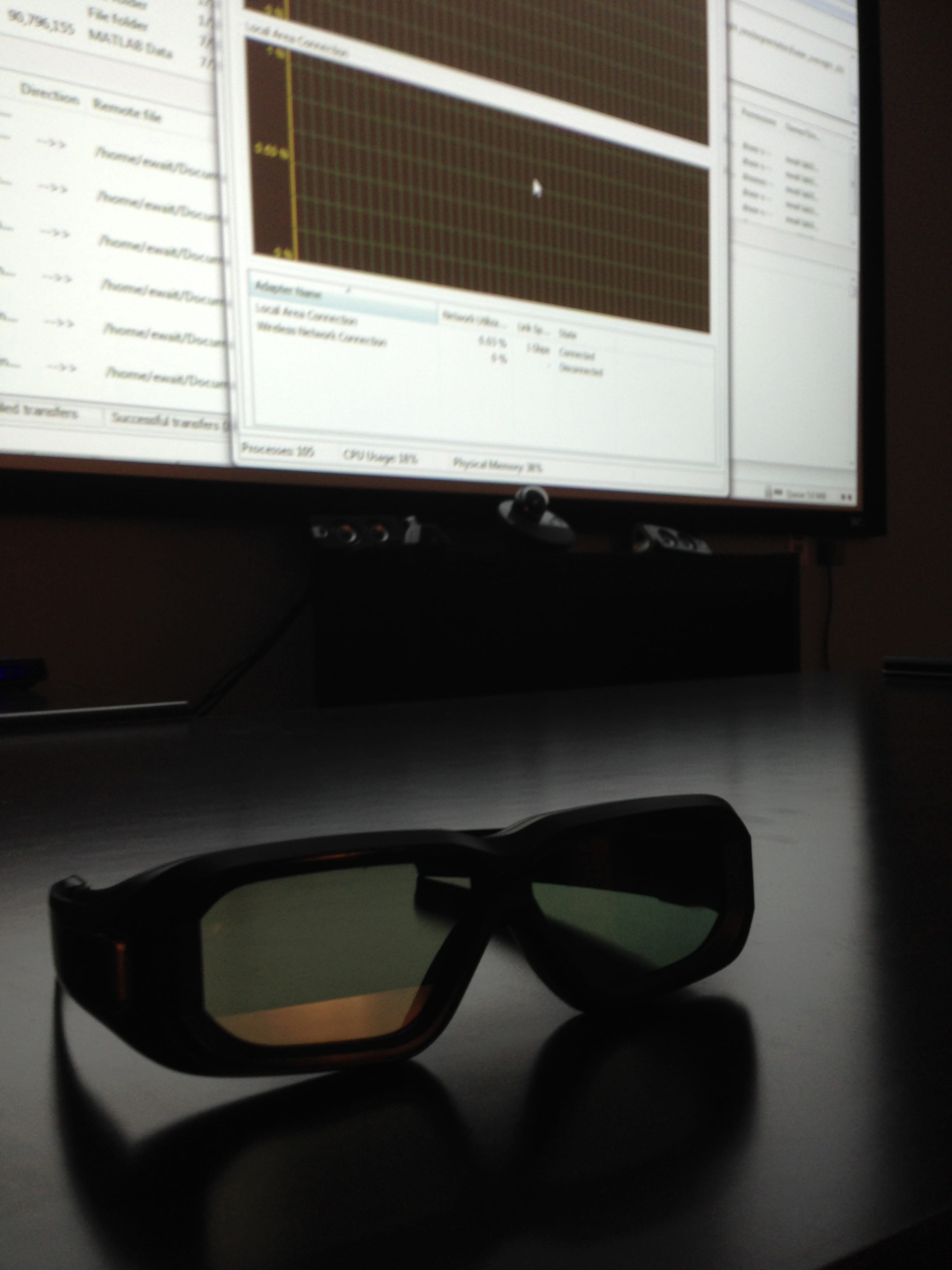Drexel Engineers Use 3-D Gaming Gear to Give Biologists an Eye-Opening Look at Cells in Action

- Drexel Environmental Collaboratory Releases Cross-Sector Findings on Severe Weather Recovery Challenges
- Drexel Launches the Manuel Stamatakis Center for Alternative Investments at the LeBow College of Business
- How and When Could AI Be Used in Emergency Medicine?
- Drexel Receives $1.4 Million Grant to Establish Hub for Literacy Reform

For hundreds of years biologists have studied cells through the lens of a microscope. With a little help from a team of engineers at Drexel University, these scientists could soon be donning 3-D glasses in a home-theater-like lab to take their own fantastic voyage into the petri dish.
Dr. Andrew Cohen, an associate professor of electrical and computer engineering in the College of Engineering, is leading a group of researchers who are developing software and hardware that will enable biologists to better track and study the movement and multiplication of cells. Their goal is to enhance the current visual data that these scientists are working with so that it’s easier to identify changes in cells over time –information that is key to studying the abnormal cell proliferation that causes cancer and also to using stem cells in regenerative medicine.
“This type of imaging is so important because it allows us to see and measure relationships between cells and their environment,” Cohen said.
Cohen, whose background includes developing operating systems support for computer games, has developed a program called LEVER –short for Lineage Editing and Validation program- that can identify, tag and track live cells, capturing patterns of motion and cell division, using sequences of microscopic time-lapse images. His work was recently published in the journal BMC Bioinformatics.

Typically the process of tracking cell lineage over time requires biologists to watch the time-lapse images and note by hand when the cells multiply –creating a graphic representation of cell division over time called a “lineage tree.” It can take a researcher several tedious hours to create a tree. The LEVER software lets the researcher work with the computer to delineate cells, color code them and denote the exact moment of their division. LEVER is easier and more accurate than processing the data manually and also provides more data than what can be obtained by hand.
“It’s like Photoshop for cell biologists,” Cohen said. “The software outlines cells and blood vessels, keeping track of them as they’re dividing and moving around one another. This provides a wealth of information on the patterns of cell shape, motion and division. Visualization of the 3-D microscopy data together with the analysis results is a key step to measure and ultimately understand what drives these cells.”
With an enhanced version of the program called LEVER 3-D, which compiles data from multi-layered microscopic images, Cohen’s team can produce a three-dimensional rendering of the cells and animate it through time to show their multiplication and movement. The enhanced imaging gives researchers a unique view of the interaction of stem cells with their surroundings.
By running the software on a computer with a graphics card optimized for gaming and donning a set of 3-D gaming glasses, the program can take scientists inside the microscopic cross section. In a portion of Cohen’s lab modified to be a viewing theater, a special stereo-vision projector brings the three-dimensional image data to life. Users can rotate and zoom in and out of the projected image in true 3-D, giving scientists vantage points that are not possible when looking through a microscope.
“LEVER 3-D is amazing, it opens new vistas for understanding the stem cell niche,” said Dr. Sally Temple, a cell biologist at the Neural Stem Cell Institute in Rensselaer, N.Y. who has been using Cohen’s software, through the course of its development, as part of her stem cell research since 2005. Cohen’s goal is to make the software open-source and readily available to any scientists who can use it for their research.
The project, which is funded by the National Institute on Aging, was recently presented by Eric Wait, a doctoral researcher in Cohen’s lab, at the Symposium on Biological Data Visualization in Boston. The team plans to enhance the interactive capabilities of the system in order to increase its utility as a tool for research.
E. Wait, M. Winter, C. Bjornsson, E. Kokovay, Y. Wang, S. Goderie, S. Temple and A. R. Cohen, Visualization and Correction of Automated Segmentation, Tracking and Lineaging from 5-D Stem Cell Image Sequences. BMC Bioinformatics, 15:328. doi:10.1186/1471-2105-15-328. October 3, 2014.
Drexel News is produced by
University Marketing and Communications.